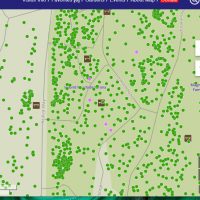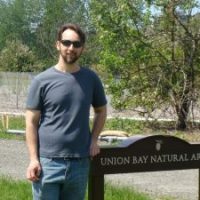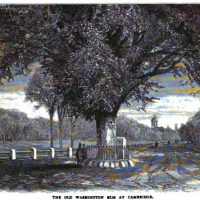New Arbor Installed in the Seattle Garden Club Fragrance Garden

On June 7, a new centerpiece was installed to enhance the Seattle Garden Club Fragrance Garden at the Center for Urban Horticulture. This beautiful arbor, designed by Tim Sharp of Iron Design Center NW, was a gift from the Seattle Garden Club, who has supported the Fragrance Garden both financially and with volunteer garden care since its installation in 2007. The Garden was extensively renovated and enhanced in 2015, and the arbor completes the design elements envisioned at that time.
Read moreExploring Student Art at UW Botanic Gardens, Part 1

In early summer 2017, Connor Walden, a Master of Fine Arts candidate at the University of Washington in 3D4M (3-dimensional Forum), jumped from concrete into the refreshing water of the Gulf of Mexico, cutting his foot on a sharp oyster shell. When Walden talked with his doctor about the cut, he learned that it was possible that he could contract a fatal infection from it.
Read moreSummer Flower Subtlety at the Washington Park Arboretum

1) Illicium henryi Henry Anise Tree
This attractive evergreen shrub is native to China.
It has star-shaped flowers in pink to deep crimson, anise-scented leaves when bruised and is tolerant of shade.
This specimen is located adjacent to the Lookout Loop Trail in the Asiatic Maple collection. Grid 25-1E, if using our mobile interactive plant map.
2) Leptospermum scoparium Manuka
A broad-leafed evergreen shrub native to New South Wales, Victoria, Tasmania, New Zealand.
Read morePurple Dots: A Dive into the Washington Park Arboretum’s Interactive Map

If you’ve spent any time looking through our interactive map of the Washington Park Arboretum, you’ve probably noticed those purple plant dots. While most of the dots denoting different plants in the collection are bright Kelly green, some of them are a festive light purple color. But why?
I stumbled on this question while trying to identify a tree that I had taken a picture of when I was wandering through the arboretum a couple weeks ago.
Hydrangeas, Crape Myrtles and Giant Himalayan Lilies: Summer Delights at the Botanic Gardens

Summer is a great time to visit the UW Botanic Gardens and offers the best weather of the year to enjoy blooms and botanically interesting walks.
Read moreStudent Spotlight: Joe Neumann Restores Vegetation and Habitat in the Union Bay Natural Area

Joe Neumann is completing a Master of Environmental Horticulture degree program at the University of Washington. He’s been working to restore different sites in the Union Bay Natural Area along the western shore of Lake Washington at the Center for Urban Horticulture. The restoration project includes clearing invasive plants and establishing native plants on three main sites to create healthy habitats for plant and animal life.
Read moreSelected Cuttings from the Washington Park Arboretum for June 2018

1) Kalmia latifolia Mountain Laurel
This attractive evergreen shrub is native to the eastern United States.
Has five-sided cup-shaped clusters of pink flowers.
The name honors Pehr Kalm (1715-1779) and latifoliia means “Broad Leafed”.
2) Rhododendron occidentale Western Azalea
This deciduous shrub is native to the coasts of central and southern Oregon and California.
Fragrant, funnel-shaped flowers are borne in trusses and vary from white to pale rose, with or without a yellow blotch and sometimes streaked with darker rose markings.
June 2018 Plant Profile: finding the story of our George Washington Elm

The Washington Park Arboretum has two large Ulmus americana in the collection: one of which, the “George Washington” elm, is a historic American tree.
Read moreJohn A. Wott Endowed Student Award Goes to Sarah Shank

The John A. Wott Botanic Gardens Endowed Student Award was awarded this spring to Sarah Shank, a first-year Master of Environmental Horticulture student at the University of Washington School of Environmental and Forest Sciences.
A native of Pennsylvania, Sarah recently moved to Seattle for graduate school and is enjoying the opportunity to learn about the diverse flora of the Pacific Northwest.
Selected Cuttings from the Washington Park Arboretum

1) Enkianthus campanulatus Redvein Enkianthus
This attractive deciduous shrub is native to open woodlands in Japan.
Tiny bell-shaped, creamy-yellow to reddish flowers held together in clusters.
Small elliptic leaves turning bright red, orange and yellow in the fall.
2) Davidia involucrata Handkerchief Tree
This deciduous tree is native to woodlands in central China.
Its small, reddish purple flower heads are surrounded by a pair of large, white bracts up to 30 cm.